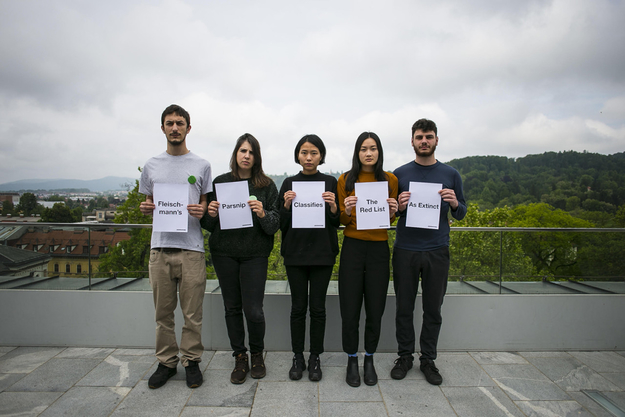The species Prunus serotina was first brought to the Netherlands in 1740 in order to increase timber production, as the cherry leaves drove insects that fed on the pine trees away. But after the pine were cut down for harvest along with the cherry trees, forest managers soon realized that the regrowing speed of the cherry exceeded that of the pine. By the 1960s, American Black Cherry was seen as a pest, and over the last decade, more than €250 million has been spent in attempts to eradicate it (Choi).
Botanical labels used in official records such as “invasive” are often naturalized; they are spoken of in textbooks, documents and news as though they are qualities pertaining to the species essentially. However, by delineating the political, profit-driven and anthropocentric context in the formation of such labels, Choi questions the epistemic authority of such “official” and “scientific” classification systems. She asks us: what, and who defines “invasiveness”? What is the “natural” state of biodiversity in a given area (because apparently in the case of the Black Cherry, 300 years was not enough for it to be considered “native”)? As much as it is made to seem so, our conception of the vegetal environment is by no means neutral or apolitical. Debates sizzle between those who argue that non-native plants should be seen within their colonial contexts in which they were introduced, in connection to the displacement of native plants and the cultures and communities depending on them on the one hand, and those who express concern regarding treating these plants as being “invasive” and its potential parallel to fascist, anti-immigrant rhetoric on the other. While some readily see the Black Cherry as a threat to the original biodiversity of the area, others advocate for the embracement of the species that has achieved a new equilibrium within its environment. At any given moment, one cannot detach the plants from their respective historical and cultural contexts in discussing them and what ought to be done about them.
Labels such as “invasive”, “natural” and “weed” are epistemic borders which materialize into physical borders that determine the plants’ status in a country (which too, are characterized by borders), whether they are to enter and how they are to be treated. In the process of defamiliarizing the authority of official botanical information, Choi not only destabilizes the borders between native and non-native plants, but the status of those who are endowed with an authority to make such definitions and those who are not, the national and political borders, the moral good and bad, individual and collective, the subject and its surrounding, nature and artifice, dichotomies that are conveniently drawn to serve certain political intentions.
Interestingly, even as Choi destabilizes predominant labels and order, she does not describe her practice as one which only breaks down such borders, rather one which “reframe[s]” them. A playful tension in her works recognizes that in order to communicate the very absurdity of epistemic categories —their limited applicability on the much complex and organic nature of reality that is always in flux—, or for any communication to be possible for that matter, those same semantic distinctions are still necessary. Robert Frost, in his renowned poem, describes a wall that separates his and his neighbor’s yards, which for some unknown reason crumbles down every time, so that every year he and his neighbor have to mend it together:
“Something there is that doesn't love a wall,
That sends the frozen-ground-swell under it,
And spills the upper boulders in the sun.
...
I let my neighbor know beyond the hill;
And on a day we meet to walk the line
And set the wall between us once again.
We keep the wall between us as we go.”
- Robert Frost, from Mending Wall (1914)
Walls of various sorts (geographic and physical, sociopolitical, epistemic, cultural) separate the pine and the cherry, the crop and the pest, the native and the foreign, the nature and the artifice. Yet to say that certain plants are “invasive” already entails the permeability of such walls. It is easy to conceive of plants as the opposite of walls, being dynamic, ever-changing, self-repairing, living. Yet, to do so is also to imagine walls as insurmountable, solid, stagnant. Throughout her works, Choi demonstrates that this unchanging, invincible, authoritarian image of walls is illusory, again and again. Subversion and reestablishment of labels, authorities and value systems happen right before our eyes, all the time. Realizing that walls become the very ladder for plant vines to climb on and later crumble into soil that nourishes them, we begin to nudge at the last wall: the wall between walls and plants. Every artwork of Choi’s is a new brick, slightly different from the brick that has just tumbled down. They redefine as much as they challenge our preconceptions. The lush vines around her wall hold the bricks together from outside-in, as much as their roots break them apart from inside-out— they are always growing.
References
Choi, Minji. Minji Choi, http://minji-choi.com/.
Frost, Robert. "Mending Wall." Tendencies in Modern American Poetry, edited by Amy Lowell, Macmillan (1917): pp. 92-93.



